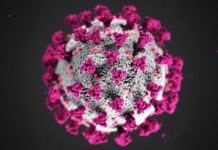Yesterday, March 22, 2015, was World Water Day, which means that human rights programs, conservation initiatives, and various organizations, took to social media to share statistics and raise awareness about global water scarcity and other issues surrounding the topic of water.
In places like the United States and Europe, where people are born into lifestyles where water is not just present, but omnipresent, it’s difficult for people to imagine not having it in their lives. Water is not viewed as a luxury, but rather, a basic natural resource, easy to obtain. However, when statistics started flowing yesterday–for instance, NPR’s opening line about how the average American taking a five-minute shower uses more water than an average person in a poor area of a developing country in a day–stories of those individuals began flooding the web.
Stories of people in Africa waking up before the sunset to walk upwards of five miles just to collect enough water for the day are common place, as nearly 750 million people do not have access to an improved water source. This also brought up issues surrounding the retrieval of water; for women in developing countries, walking anywhere alone can be dangerous, especially at dawn when few people are out, or through the forest, which may be the most direct route to the source. Stories of women getting raped and assaulted are commonplace in many of these communities.
While World Water Day every year presents these statistics in a light relating to general equality and human rights, this year there were presentations that were presented to alarm the world of the future threats of water scarcity. The UNDP (United Nations Development Programme) expressed concerns for the effects population growth and urbanization will have on the global water situation. They project the demand for water is going to increase by a monumental 55% by 2050 to provide energy, foods, and other industrial goods. Thus, even though these countries may be in the process of development, the percentage of people in the world living in water-stressed countries is likely to increase by 2025 if the patterns of water usage that currently exist continue to take effect.
Every year this kind of social media campaign takes place, but with the current drought in California, organizations really sought to capitalize on expanding American awareness on the topic. Only time will tell if people will really begin to take action and change their personal consumption…

















